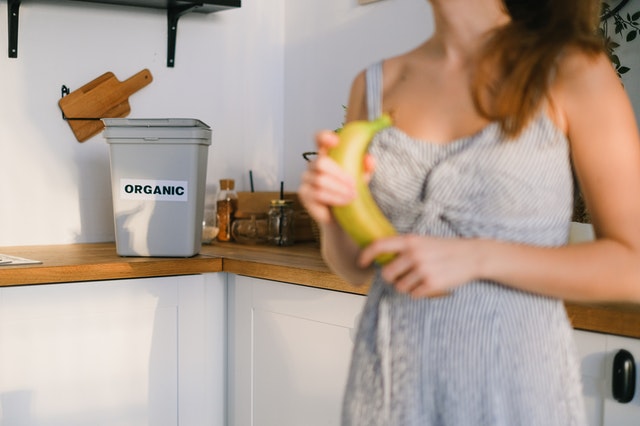In the US, we are fortunate to have many natural resources that we leverage to fuel our economy and sustain our quality of life. However, a growing concern is that our way of life is, in fact, not sustainable for much longer. The American population is expected to grow from 333 million in 2021 to a whopping 404 million by 2060. Many benefits come with a growing population, but one of the negatives is more strain placed on the environment.
The US counts oil, coal, and gas as its most plentiful natural resources but also boasts an abundance of timber, farmland, and mineral deposits.
You might have noticed that the amount of discussion around sustainability and natural resource conservation has been amplified in the media and pop culture lately. The efforts that activists have put in have paid off by raising awareness and creating large-scale action. The result of this is that more than ever, so many inspiring initiatives are being made to make conservation more convenient and education more accessible. So, let’s talk about reducing natural resource waste in your home!
Water

With the average North American household using roughly 240 gallons of water daily on top of agricultural and industrial use, water conservation is a crucial topic in the conversation about natural resource conservation. Take a second and add up the number of taps in your home — chances are you have at least one water source in your kitchen, bathrooms, and laundry room. If you live in a detached house, add outdoor taps to that list and possibly a sink in your garage, too.
In terms of your home fixtures and appliances, there are two main ways you can reduce your water consumption right from the source. You can replace fixtures like taps, toilets, and showerheads with low-flow options. Wait, don’t leave! Low-flow does not mean low water pressure — promise. Low-flow fixtures are designed internally to create higher pressure with less water, not to swindle you into having terrible water pressure. If you’re looking for a high-impact place to start, old toilets are notorious for how much water they use per flush.
There isn’t a low-flow option for your appliances like your washing machine and dishwasher, but there are energy-efficient options. Look for ENERGY STAR-rated products — these appliances are created to reduce inefficiencies that create longer cycles, therefore using less water. Less time, less water, and less power used — it’s an all-around win for you.
Energy

There are many different power generation methods, and how your electricity is generated will be dependent on your location. Wind, hydro, solar, biomass, and geothermal are all sustainable and renewable energy sources, but they currently only account for about 20% of electricity generation in the US.
We’re on the right track, but the US is still heavily dependent on natural gas for energy, with 40% of national electricity generation coming from natural gas in 2020. The other portions are 20% from nuclear power and 19% from coal.
With only 20% of our electricity coming from renewable resources, right now, using less electricity means reducing your consumption of non-renewable natural resources. Like many other means of helping the environment, energy savings are also easier on your bank account!
Here are some easy ways to save energy and make a positive impact on the environment:
- Replace lightbulbs with energy-efficient ones.
- Weatherize your home.
- Install a programmable thermostat.
- Wash clothes in cold water.
- Use a toaster oven instead of heating your whole stove for smaller dishes.
- Installing solar panels is a great way to reduce traditional power usage. Our sun is the biggest source of energy we have. Solar panels are designed to turn the sun’s energy into electricity to power homes. Solar energy is a renewable resource, making it sustainable, as well as budget-friendly in the long run. There are practical tips to understand the sun’s energy and how to modify our home to use it better.
- Wiring and electrical system maintenance. Make sure your electrical system is working to the nines and that you’re not having any electrical issues that might make you consume more energy, this will not only affects the environment but your pocket as well. You can get a trustworthy electrician to help you with any maintenance you might require.
Household Waste

Household waste is everything that goes into a garbage can. We purchase things and throw away the packaging or the entire product in the case of disposable items. Here’s a quick example to show how much our consumption has increased. In 1900, American raw material consumption was less than two metric tons per person. It peaked in 2006 at 13 metric tons per person.
That’s just raw materials! The average American produces up to twice the amount of daily garbage as someone living in Sweden, Germany, or the UK. With only about a quarter of this being redirected to recycling facilities, that amounts to a lot of waste.
Try doing just a couple of these waste-reducing ideas and watch how quickly and easily you’ll notice a difference in how often you have to take out the garbage:
- Compost. Even if you live in a place that doesn’t have compost pickup alongside garbage and recycling, you can still compost! A small compost bin in your kitchen can be emptied into a larger bin outside if you have a yard or dropped off with local community gardens.
- Stop using disposable coffee cups. While it might be tempting to pick up a sleeve of to-go cups at Costco and never have to worry about tracking down your reusable mug again, it’s a small thing you can do to create less waste.
- Join a local buy and sell group. Whichever your choice of social media platform, there’s likely a local group that’s set up to encourage reusing or recycling items instead of throwing them out.
- Search out products that can be bought in bulk and refilled. You might be surprised to find how many items — from mouthwash to laundry soap — you can get at a refillery store. Instead of tossing the container each time, you take it back and fill it up. Bonus — this sustainable option is less expensive, too.
How To Encourage Wildlife

Your local flora and fauna are a critical part of the ecosystem in your area. If you’re living in a new development or subdivision, you might be thinking, “What flora and fauna?” and if that’s the case, this section is especially for you! We are guilty of leveling areas to build homes and forgetting to invite the locals back once we’re finished. You can create an inviting space to bring wildlife into your garden with some small steps.
Depending on your location, there will likely be some garden or household pests that you want to deter, but there are also possible ways you can make your garden or patio friendly to other types of wildlife. Here are a few ways you can have flora and fauna-friendly outdoor area:
- Put up a birdhouse in your garden to attract local birds to your yard. Birds help spread seeds and pollinate, not to mention keep your insect and reptile population in check.
- Only mow your lawn once a month to allow small plants like daisies and clover a chance to grow. You might not have the military buzz-cut of the lawns on your street, but you’ll be giving the plants and insects in your yard a chance to thrive.
- Grow climbing vines that provide shelter for insects and birds. Will the birds eat the insects? Yes! That’s part of how you’ll contribute by providing a place for a natural cycle to go on.
- Grow flowers to give pollinators like bees a place to thrive. By now, we’ve all heard about the bee crisis — you can help and enjoy a beautiful garden. If you’re not a natural or don’t have a lot of time, grab a wildflower seed mix and literally throw it into a patch of dirt to see what happens!
- Make a small pond and plant water lilies to keep the water fresh. You’ll have a lovely sight to look at, and little critters like frogs will have a place to lounge and catch bugs. Everybody wins.
Leverage Green Tech

One of the great benefits of the current tech boom combined with the environmental movement is the abundance of technology used to combat human impact on the environment. The sky’s the limit, from countertop compost machines that create soil in hours to programmable thermostats to automated irrigation systems.
Thanks to technology, you can now find significant innovations in sustainable resource use, such as:
Smart Kitchen Composter – you’ll be blown away when you turn kitchen scraps into usable soil in a few hours.
- Smart Thermostat – this system allows you to section your home into heating and cooling zones and set those zones on a schedule.
- Smart Irrigation Controllers – not just for farms, these watering systems help homeowners ensure that their watering schedules are on time and scheduled at the best time of day to conserve water.
Tech can surely help us make a positive environmental impact. It is equally important to responsibly dispose of our electronic devices. E-waste are any discarded electronic devices such as refrigerators, toasters, laptops, electronic toys, among others. Correctly disposing these items can avoid dangerous chemicals, such as mercury, from polluting our planet.
With all the info and tips in this article, you’re well equipped to impact the environment positively! Remember that even if you’re not a true blue sustainability crusader, choosing a couple of the suggestions above and making them a part of your daily habits is a big step. Working together is critical here — we can all make small changes and create massive results. You don’t need to change your whole life to change the world!




